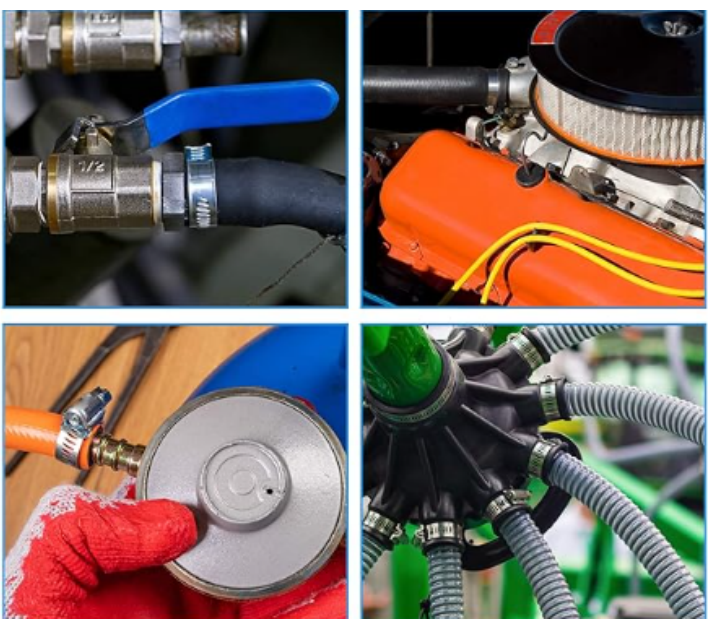- Phone:+86-17331948172 +86-0319-8862898
- E-mail: inquiry@puxingclamp.com
Nov . 28, 2024 01:48 Back to list
Wholesale 25mm Hose Clamp for Reliable Connections and Durable Performance in Automotive Applications
Understanding the Role of 25mm Hose Clamps in Various Applications
In various industries, hose clamps play a pivotal role in maintaining the integrity and safety of fluid transport systems. Among the different sizes available, 25mm hose clamps are particularly significant due to their versatility and effectiveness in securing hoses of that diameter. This article delves into the importance, applications, and features of wholesale 25mm hose clamps, offering insights into their indispensable role across multiple sectors.
What Are Hose Clamps?
Hose clamps are mechanical devices used to secure hoses onto fittings, thus preventing leakage or disconnection under pressure. They come in various types, including worm gear, spring, and T-bolt clamps, each designed for specific applications. The choice of clamp often depends on factors such as the hose material, fluid type, and application environment.
Significance of 25mm Hose Clamps
The 25mm size hose clamps are particularly valuable because they cater to a common hose size used in numerous applications. From automotive systems to agricultural equipment and HVAC installations, the 25mm hose clamp plays a crucial role in ensuring operational efficiency and safety. A reliable hose clamp can prevent costly leaks and system failures, making quality paramount.
Applications of 25mm Hose Clamps
1. Automotive Industry In vehicles, coolant hoses often come in various diameters, with 25mm being a common size. Hose clamps of this dimension secure the hoses to water pumps, radiators, and engine blocks. A secure fit is essential to withstand the vibrations and temperature fluctuations that occur during operation.
2. Agricultural Machinery The agricultural sector relies heavily on water pumps and irrigation systems, necessitating the use of durable hose clamps. 25mm hose clamps are frequently used in these setups, ensuring that water is transported efficiently without leaks. A single malfunction in a hose can lead to significant operational downtime and financial loss.
3. Marine Applications In marine environments, where corrosion and water exposure are prevalent, the choice of materials for hose clamps is critical. Quality 25mm hose clamps made from stainless steel or other corrosion-resistant materials can provide the necessary longevity and reliability to withstand harsh conditions.
wholesale 25mm hose clamp

4. HVAC Systems In heating, ventilation, and air conditioning systems, the secure fitting of hoses is essential for system efficiency. The 25mm hose clamps ensure that refrigerant and air flow without obstruction or leakage, maintaining the system’s overall performance.
Features to Consider
When selecting wholesale 25mm hose clamps, several features should be considered
- Material Hose clamps are usually made from stainless steel, zinc-plated steel, or plastic. Stainless steel offers superior resistance to corrosion, making it suitable for applications exposed to moisture or chemicals.
- Design The design of the clamp can significantly affect its performance. Worm gear clamps are popular due to their ease of use and ability to provide a tight fit. On the other hand, spring clamps are useful for applications that require flexibility and frequent adjustments.
- Durability Look for clamps that can withstand the specific conditions of your application, including temperature fluctuations and exposure to chemicals.
- Ease of Installation Depending on the installation environment, opting for clamps that require minimal tools and effort can save time and labor costs.
Conclusion
Wholesale 25mm hose clamps serve as integral components in various systems, ensuring that hoses remain securely fitted and functional. Whether in automotive, agricultural, marine, or HVAC applications, these clamps are essential for preventing leaks and maintaining operational integrity. As industries continue to advance, the demand for reliable and high-quality hose clamps will only increase, making them a crucial investment for businesses across sectors. By understanding the specific requirements and applications of 25mm hose clamps, manufacturers and users alike can ensure they make informed decisions, ultimately leading to enhanced efficiency and safety in their operations.
-
Large Stainless Steel Adjustable American Type Hose Clamp-Hebei Pux Alloy|Durable Stainless Steel Construction&Adjustable Design
NewsAug.15,2025
-
Large Stainless Steel Adjustable American Type Hose Clamp - Hebei Pux Alloy Technology Co., Ltd
NewsAug.15,2025
-
Large Stainless Steel Adjustable American Type Hose Clamp - Hebei Pux Alloy Technology Co., Ltd|Adjustable Design&Corrosion Resistance
NewsAug.15,2025
-
High Quality German Style Mini Stainless Steel Hose Clamps
NewsAug.15,2025
-
Large Stainless Steel Adjustable American Type Hose Clamp-Hebei Pux Alloy Technology Co., Ltd|Corrosion Resistance, Adjustable
NewsAug.15,2025
-
Large Stainless Steel Adjustable American Type Hose Clamp - Hebei Pux Alloy Technology Co., Ltd
NewsAug.14,2025




